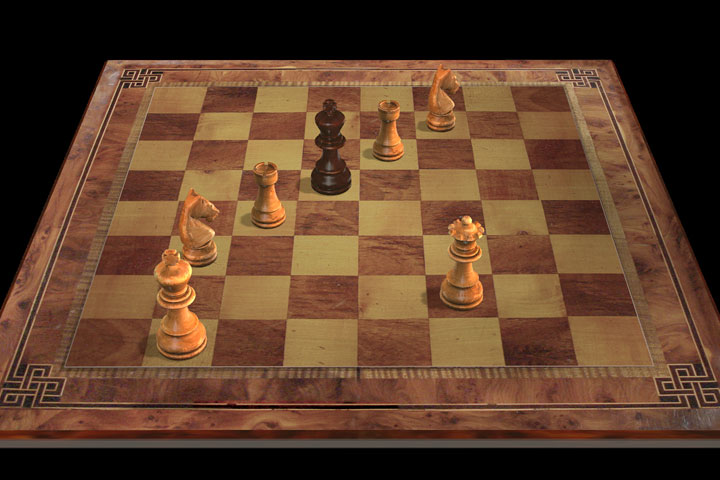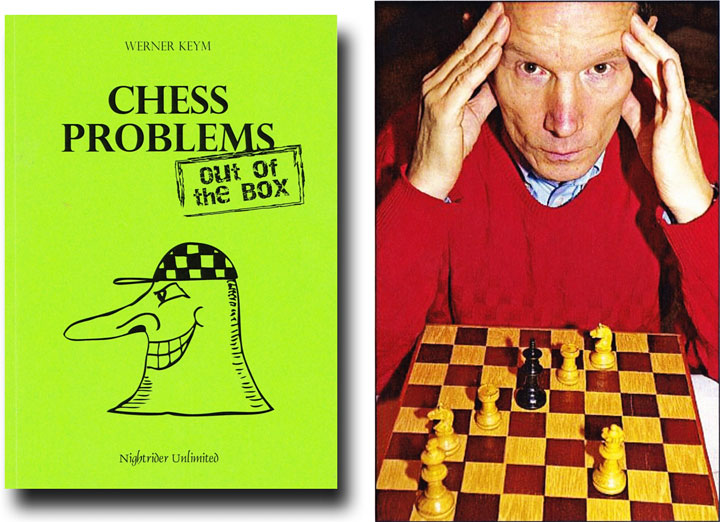


 Retro Chess revisited
Retro Chess revisitedThe letter came from Werner Keym, who is a teacher (of French and Latin) and a musician who has organised more than 300 concerts in his town. Then, in 2010, he ran as an independent candidate for Mayor of Meisenheim and won in a landslide. He held that position until 2014, when at 72 he retired to devote more time to his family — he has five grandchildren — and to his hobbies. The foremost of them is problem chess.
Werner Keym is one of the most creative problemists I know. He specializes in problems involving castling, en passant captures and pawn promotion. For many years I have enjoyed his problems, which I often encountered. Many have the advantage of not being prone to instant solution by chess engines. They force you to think.
I also enjoyed his chess humour and his meticulous quest for accuracy. In reaction to my article on Retro Chess he wrote:
The problem on the cover of "The Chess Mysteries of Sherlock Holmes" by Raymond Smullyan (wKc8, Bg1, Ph2; bKa8) was first published, in a mirror version, by Jan Mortensen in Fairy Chess Review 1956 (wKa1; bKc1, Bg8, Ph7, What was White's last move?).
The position on the cover of "The Chess Mysteries of the Arabian Knights" by Smullyan, Manchester Guardian 1957, (wBa4; bKd1, Rb5, Bd5, Where is the white king?) is rightfully famous. But the position of the solution, wKf3, Bh4; bKe1, Be5, Rg5, (mirrored) was published earlier by Branco Pavlovic in Sahovski Vjesnik, 1950. Smullyan did not know the problems of the European retro-problemists, as he later wrote.
Bengt Giöbels twins had a predecessor by T.R. Dawson in 1927, with the same idea, but with stalemate in one move.
My own problem, which is of average quality, can be often found in English books. I have composed better last movers.
Together with the letter, Keym sent me a signed copy of his most recent English language book, "Chess Problems Out of the Box". It is going to keep me busy for a long time to come. It is one of the most entertaining works I have ever encountered (and it is competing with Loyd, Dawson, Fabel, Smullyan and co.).

Werner Keym and his book | Gabi Novak-Oster
In the above photo, we see position 271 from his book: Mate in two moves. It is an elegant miniature and one of Keym's favourite problems. It was published in the Rhein-Zeitung Koblenz in 2002, on the occasion of his 60th birthday. At the time, 223 readers of 237 got the solution wrong: 1.Rb6? is not possible because Black could not have made the last move. So it must be his turn to play. I have added the solution in the game viewer at the end of this article.
To provide an impression of the book I give you the problems of the first two pages, devoted to castling problems.

Click or tap to enlarge
Remember there are 167 more pages, densely filled with unusual and tongue-in-cheek problems. Don't take my word for it; go buy a copy of Chess Problems out of the box — it's just €10 / US $12 (plus €2/$4 for postage). Outrageously good value for money.
The first six problems have minimum material: just the two kings and two white rooks. They are simply fun to solve, and quite easy, since we know that castling is involved. Please try to find the solutions before you proceed to game viewer at the bottom of this article.
The next set starts with a charming twin — clearly, only one position involves castling. The Loyd problem is absolutely classic and will never be forgotten (try solving it, and pat on the back if you succeed). Giöbel is fairly subtle. Think for a moment before you decide on the solution. And recognize that our live replay diagrams understand the castling rules. Kraemer is elegant and astonishing, while the symmetrical Knöppel is asymmetrical due to castling.
Please do try to solve as many problems as you can without looking at the solutions below. That is the only way one can really enjoy them. The problems are not so hard — I solved most of them directly on the pages of the book. Also please tell us what you think of this area of chess. Do you find it entertaining and enjoyable? Should we continue bringing you unorthodox chess problems?